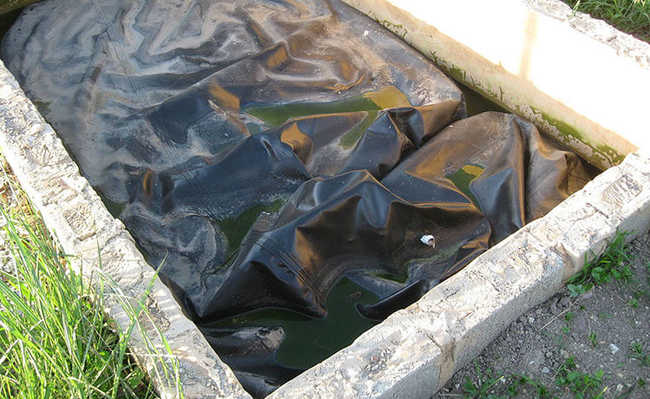Germs: understand what they are and know how to prevent
Germs are disease-causing microorganisms that spread in different environments. Know how to keep them away

Image: Michael Schiffer on Unsplash
“Germ” is a term used to refer to various disease-causing microorganisms, such as bacteria, viruses, fungi and protozoa. Despite the existence of a large amount of harmful micro-organisms to health (scientifically known as pathogens), there are others that are harmless and that generate benefits to living beings, such as probiotics.
Microbiology demonstrates that the total number of species of micro-organisms is incalculable. This diversity is the result of the adaptability of these organisms, which survive anywhere on the planet. They are in the air, underground, at the bottom of the sea and even within us.
How do germs spread?
With the exception of viruses, most germs grow in any warm, humid environment. In the case of viruses, diseases are transmitted through the reproduction process, in which they need to be inside a host, since they are acellular micro-organisms that do not have their own metabolism.
Other germs can spread through contact with secretions from infected people and contaminated surfaces, water or food. Also, they can travel through the air in small dust particles or water droplets.
The most common sources of germs are: contaminated water and food, frequently touched surfaces (knobs, faucets, telephones), waste disposal areas (trash), cleaning items (flannels, sponges, toothbrushes) and pets infected.
Examples of most common germs
- Salmonella, bacteria that cause foodborne infections;
- Rhinovirus, the virus that causes the common flu;
- Trichophyton, a fungus that causes chilblains;
- Giardia Intestinalis, a protozoan that causes diarrhea.
skin infections
Skin infections occur when germs enter the skin through cuts or breaks and are able to develop inside the skin. While some infections need to be treated with antibiotics, most are simple and resolve quickly.Examples of skin infections
- Boil, caused by Staphylococcus aureus bacteria;
- Erysipelas, caused by Streptococcus bacteria;
- Mycoses, caused by different species of fungus and classified from the affected area;
- Herpes, caused by Herpesvirus types 1 and 2.
Signs and Symptoms of Skin Infections
The first signs of a skin infection are redness, itching, and small bumps on the skin. If it is more severe, pus, blisters, peeling and darkening of the skin are other signs that can indicate contamination by germs.
Typically, characteristics such as symptoms and location, in addition to the person's age and daily habits, will be analyzed by the doctor or doctor to determine the infection. If in doubt, they can order a tissue biopsy for more specific treatment.
animal germs
Some animals can transmit diseases to humans if they are infected by a germ. These diseases are called zoonoses. Learn more about the subject and how to prevent yourself in the article: "What are zoonoses?" The most common examples of animal-borne diseases are rabies, ringworm and leptospirosis.
Anger
Rabies is a disease caused by a virus and transmitted to humans through bites, licks on wounds, mucous membranes or any scratches from the infected animal.
Mycoses
Fungi are germs that cause ringworm, both in people and animals. They can live in soil, plants or skin. Even though they are easily found, they will only cause mycoses in the presence of special conditions, such as low body resistance.
leptospirosis
Leptospirosis is a bacterial disease transmitted through water or food contaminated with the urine of infected animals. In cities, the main disseminator is the rat, hence the importance of preventing you and your animal from having contact with flood waters, for example.
Tips to prevent contamination and proliferation of germs
1. Wash your hands
The biggest source of germ transmission is the hands. On an average day, your hands come into contact with different surfaces and objects. Therefore, it is important to always keep them sanitized. Hand washing is a simple habit and one that prevents cross contamination and helps fight germs.
2. Keep the bathroom clean
The bathroom is one of the most infected areas in the house. To prevent germs from spreading, it is necessary to keep your bathroom clean at all times.
3. Sanitize your hands before preparing food
Handle and prepare food safely. Clean your hands and surfaces regularly.
4. Clean up the garbage
A point that must not be forgotten is the constant removal of garbage and cleaning the dumps. Allowing the accumulation of garbage in the home can be a major influencing factor for contamination.
5. Be careful when sneezing and coughing
Cover your nose and mouth with a tissue when you cough or sneeze. Dispose of all tissues in the trash and wash your hands.
6. Keep your vaccinations up to date
Vaccination is an excellent way to protect yourself from more serious infections. Make sure your family has an up-to-date vaccination card.
7. Use natural remedies
There are numerous natural substances that help fight and prevent infections caused by germs. Get to know some of them in the article: "18 natural remedies to grow at home".
8. Talk to a healthcare professional you trust
Remember that it is always recommended to consult a doctor or doctor, especially if the problem is recurrent or worsens.
Sources: What is the difference between germ, microbe, bacteria, bacillus and virus?, Skin Infection and Infection Prevention










